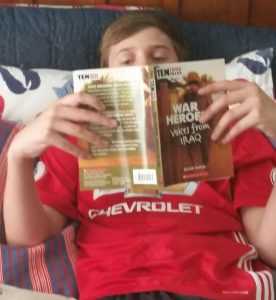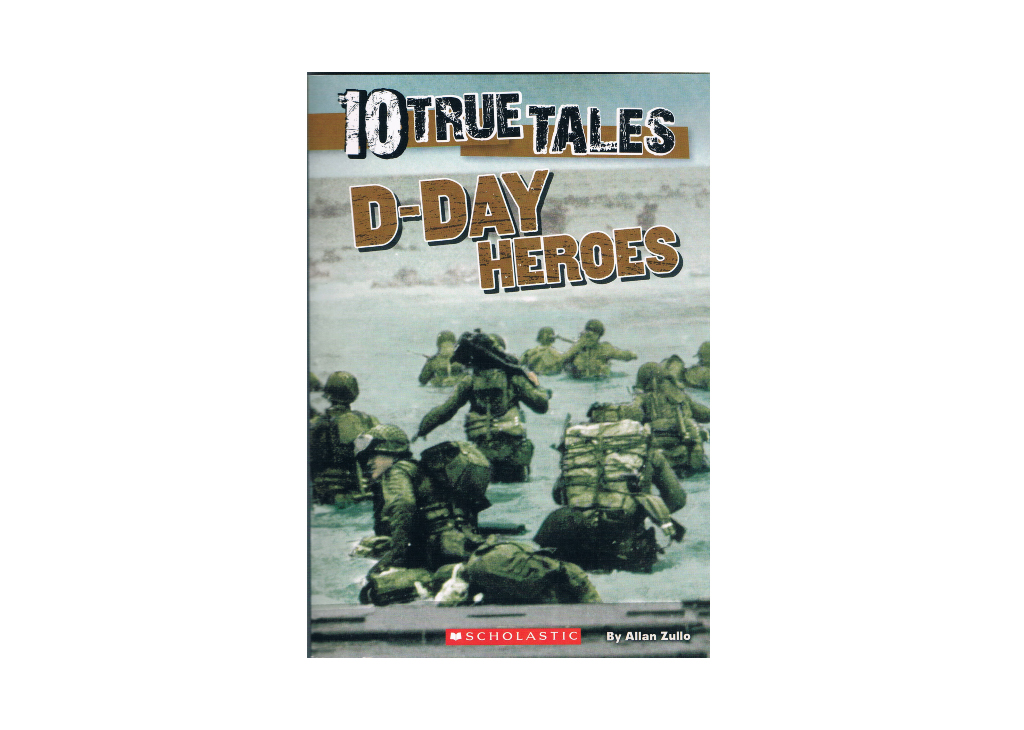It was the largest invasion in military history.
Known simply as D-Day, the date June 6, 1944, was a day like no other. A massive air and sea armada beyond anything the world had never seen before traveled across the English Channel in the dark of night, carrying more than 150,000 troops. At dawn, the first assault wave of these brave soldiers, sailors, airmen, and coast guardsmen invaded the Normandy coast of Nazi-held France.
Here, on the beaches, atop the cliffs, between the hedgerows, and in the fields, they sacrificed life and limb in a bloody, chaotic battle that marked the beginning of the end of World War II and German dictator Adolf Hitler’s mad quest to rule the globe.
The Allies’ might on D-Day was mindboggling: more than 5,000 vessels, including 1,100 warships and thousands of landing craft of all shapes and sizes; roughly 156,000 troops; and about 13,000 planes, including fighters, bombers, troop carriers and gliders.
Wearing enormous amounts of gear, many paratroopers drowned when they descended into swamps, flooded fields and rivers. Others were riddled with bullets during their descent or died in planes that were shot down. Nearly half were killed or wounded or couldn’t find their outfits for days. Although widely scattered, the surviving paratroopers gathered in different units and started attacking the Germans, cutting communication lines, knocking out big guns and capturing causeways.
 The focal point of the Allied invasion—the six-mile stretch of Omaha Beach—turned into a horrific, bloody near-disaster for the 1st and 29th Infantry Divisions and U.S. Army Rangers. The Germans took advantage of the cliffs and 100-foot-tall bluffs overlooking the beach to place anti-tank guns, artillery batteries, machine gun nests, pillboxes, and mortar pits. They spiked the beach with large metal obstacles, rolls of barbed wire and landmines and lined the waters just offshore with thousands of underwater mines and obstructions to thwart landing craft. As landing craft neared shore, several hit submerged mines and blew up, flinging men and equipment into the water. Enemy artillery and mortar rounds blasted vessels into smithereens.
The focal point of the Allied invasion—the six-mile stretch of Omaha Beach—turned into a horrific, bloody near-disaster for the 1st and 29th Infantry Divisions and U.S. Army Rangers. The Germans took advantage of the cliffs and 100-foot-tall bluffs overlooking the beach to place anti-tank guns, artillery batteries, machine gun nests, pillboxes, and mortar pits. They spiked the beach with large metal obstacles, rolls of barbed wire and landmines and lined the waters just offshore with thousands of underwater mines and obstructions to thwart landing craft. As landing craft neared shore, several hit submerged mines and blew up, flinging men and equipment into the water. Enemy artillery and mortar rounds blasted vessels into smithereens.
Many of the troops who reached the beach were weak from seasickness and slow from their heavy, waterlogged clothes and gear. Finding little cover, they were slaughtered by machine guns spraying 1,200 bullets per minute. The wounded lay at the water’s edge only to drown when the tide came in.
The Allied casualty count was steep. According to the U.S. National D-Day Memorial Foundation, 2,499 Americans and 1,914 troops from the other Allied nations—a total of 4,413—were killed on the beaches of Normandy on D-Day. An estimated 6,000 were wounded.
Despite the carnage, the Allies persevered. By nightfall, many units had advanced, although it took five more days of fierce fighting to secure all the beaches. The Allies continued their march through France and, after winning a series of bloody battles, ultimately drove the Germans out of Western Europe, liberating the once-conquered countries. On May 8, 1945—less than one year after D-Day—Nazi Germany signed an unconditional surrender. The war in Europe was over.
This book features ten stories of incredible heroism on D-Day. These accounts are based on memoirs, oral histories, newspaper accounts, battle reports and military files and use real names, dates and places. The bold bravery, gritty determination and fighting spirit of the forces of freedom—which are reflected in the stories in this book—powered D-Day into the turning point of World War II.
Any teacher who has a Scholastic account can order books for you at scholastic.com or by calling 800-SCHOLASTIC and asking for ISBN 978-1-338-22265-4.
Each book in the Ten True Tales series features ten exciting stories based on true events ripped from the headlines or taken from little-known moments in history. Most of the stories in this gripping series reveal, in dramatic fashion, kids, first responders, regular people and soldiers caught in extraordinary situations — often with their very lives in extreme danger

